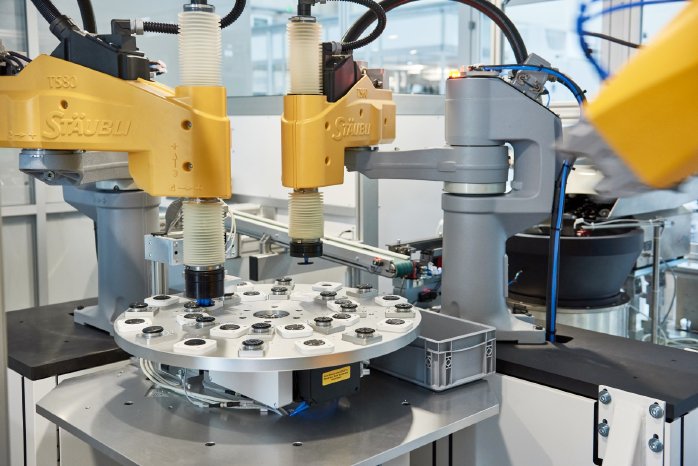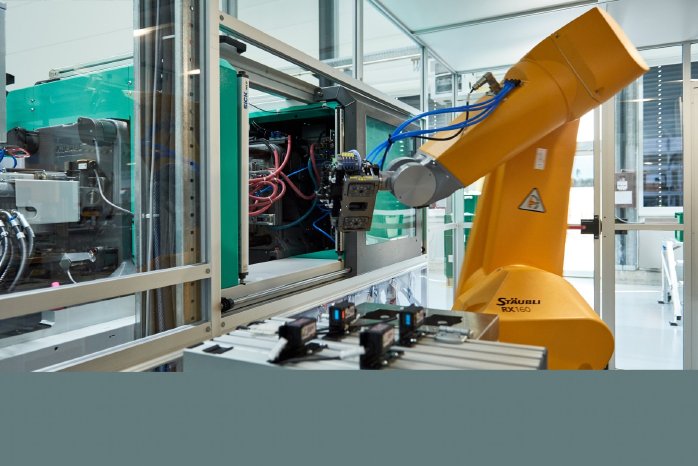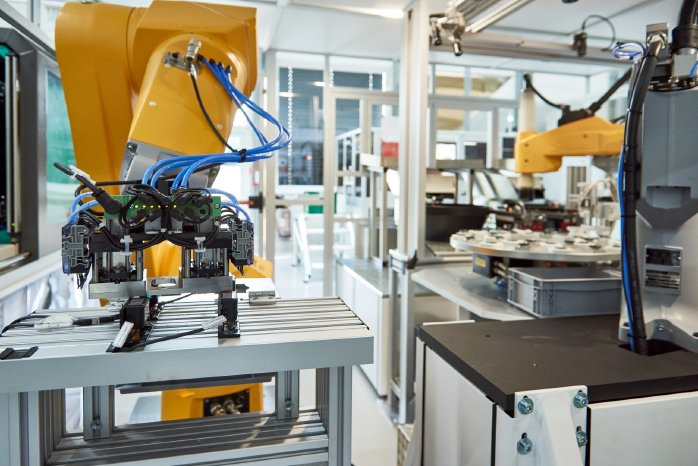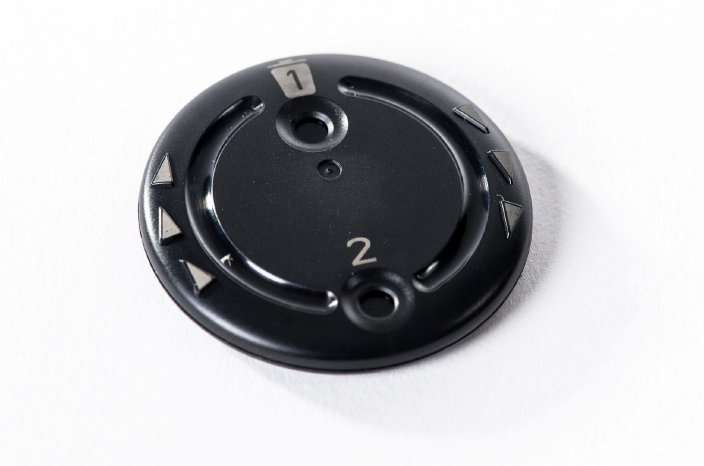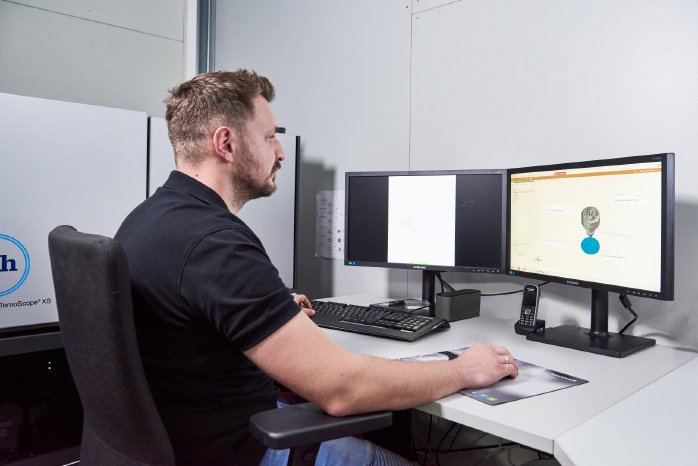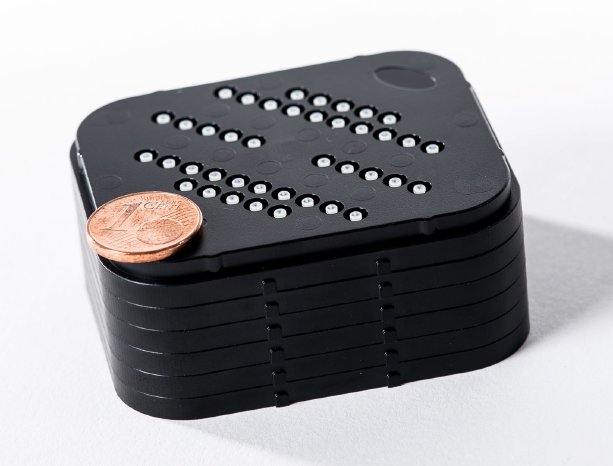Design follows process
“The dispenser system comprises three external parts (bottom, top and label), with the filters inserted into the bottom. There is also a mass storage unit housing additional filters so that the hearing aids can be fitted with an initial filter on Sonova’s assembly line” says Thomas Lender, head of injection moulding at toolcraft. The filter can be changed by the hearing aid wearer independently. This increases the durability of the hearing aid, improves its performance and makes it easier to use. The initial design of the cerumen filters and the dispenser system had to be revised in close cooperation with the client in terms of its manufacturing feasibility and ability to be produced automatically. Besides the fully automated production process, discussions focused on economic efficiency. During the design and construction of the systems, particular attention was paid to the high accuracy and precision of the individual components. The actual filter is smaller than a granule and is produced using micro-injection moulding. Its intricate design gives the product a longer lifecycle.
Bringing the smallest of parts into full-size view
Ensuring it was possible to manufacture the mould and to handle the filters during production proved to be the greatest challenge. This is where toolcraft’s longstanding experience and expertise in design, mould making for very small parts, robotics and injection moulding came in. “The development of an automated process was particularly tricky when determining how the parts could be picked up and handled. Inspecting the parts using a camera and laser micrometer technology as well as lasering the packaging components in the predetermined cycle time demanded extensive knowledge of process development and camera and laser technology”, explains Markus Bengel, deputy head of engineering and robotics at toolcraft. The delivery time was also very tight and changes to the materials during the project put the team under additional pressure. Various materials were ultimately selected. The bottom is made from SAN, the top and the mass storage packaging from ABS, and the label from PS. During the filter manufacturing stage, the material was changed to POM with fibreglass. This posed additional challenges during the removal of the parts from the mould as well as when connecting the parts, handling them using robots, separating and inspecting them.
Complete solution of mould making, injection moulding and robotics
After the project team consisting of mould making, robotics and injection moulding had been assembled, the focus was on the feasibility study examining the plastic components in terms of moulds, injection moulding, gripping technology and separation during the automation process. This was followed by design coordination with the customer and optimisation of the geometry. After the conceptual development of processes for manufacturing, removing and handling the components, the moulds were designed and at the same time the construction of the automation started. Finally, the individual components were brought together and the systems commissioned. Random CT measurements of the parts also ensure continuous quality assurance.
A world full of sound
A number of challenges had to be overcome due to the fact that the deadline for starting production of the new generation of hearing aids had already been set in stone and due to changes in the materials and design during the project. The tight time constraints also meant that the second system had to be planned and put into series production at the same time as the first. Thanks to its excellent network of suppliers and the expansion of its own expertise in automated injection moulding, toolcraft successfully completed a project in a class of its own. The filter systems have been rolling off the fully automated production line ever since and are used in the new hearing aids to ensure wearers can enjoy a world full of sound.
